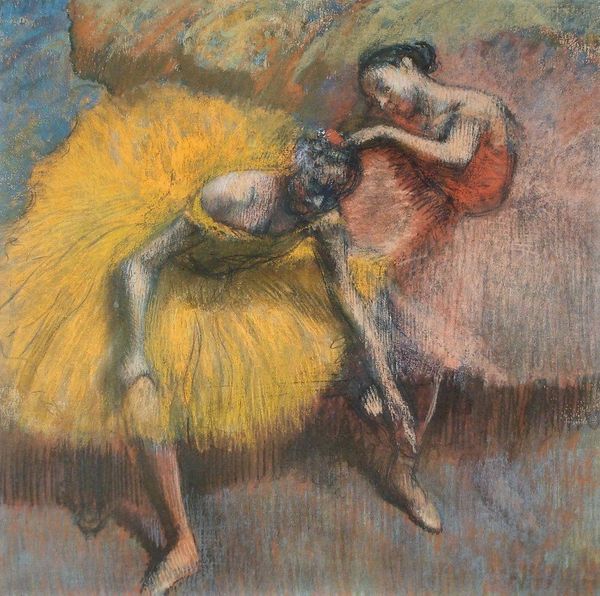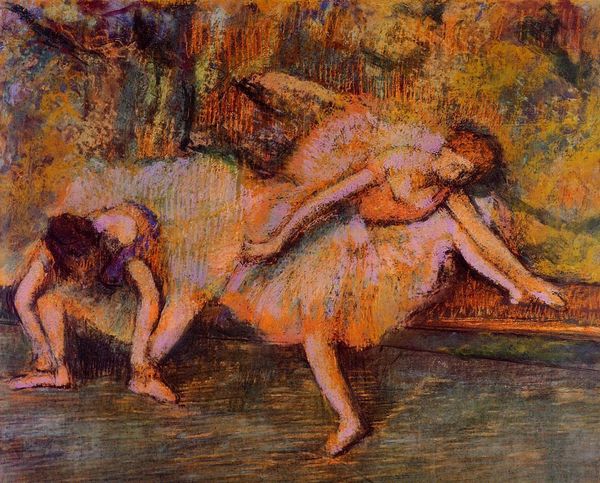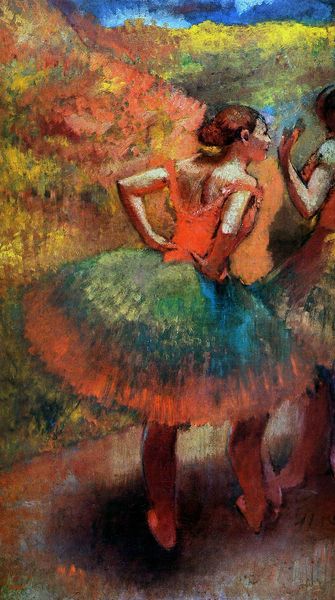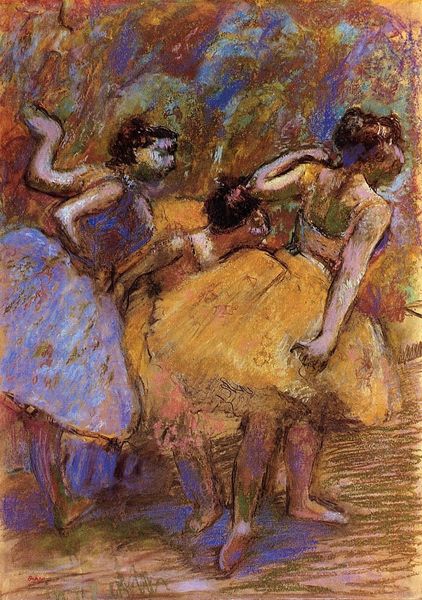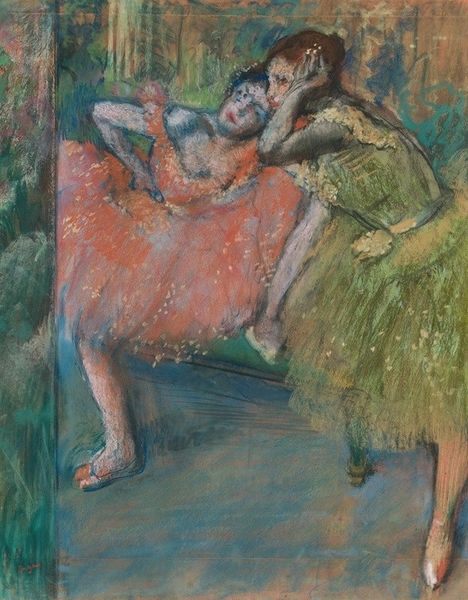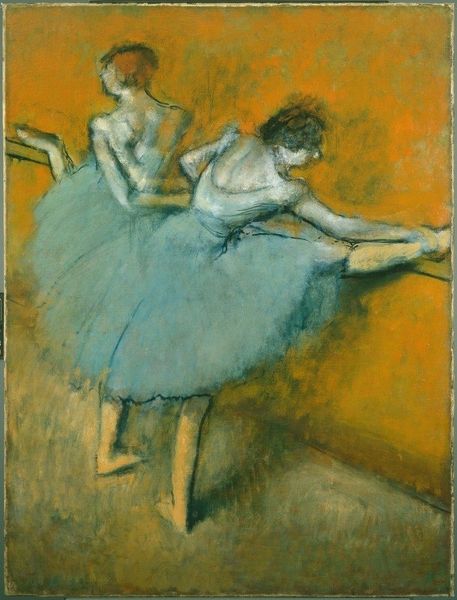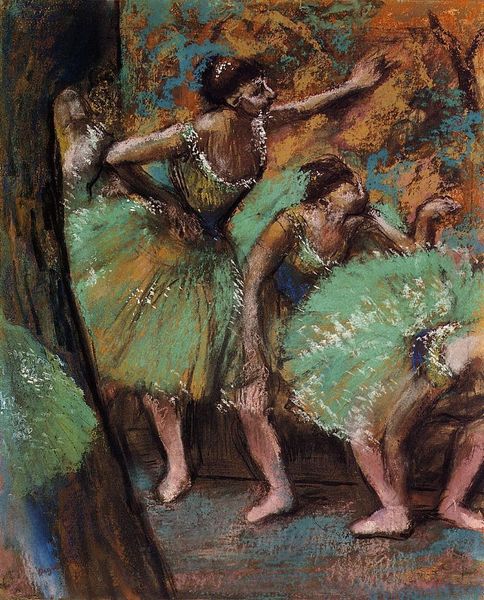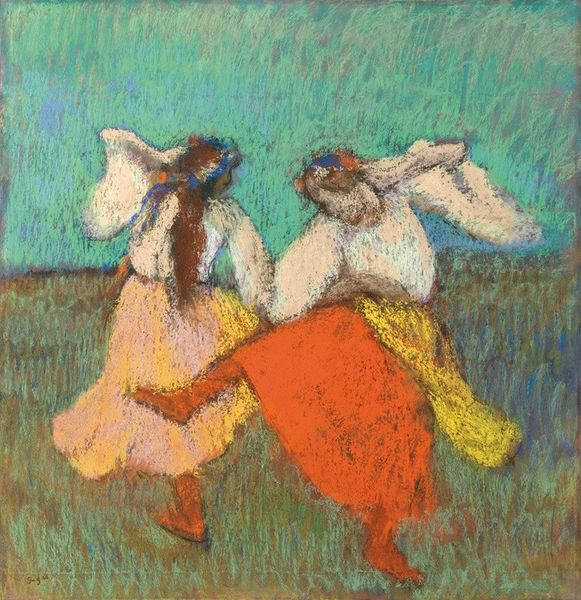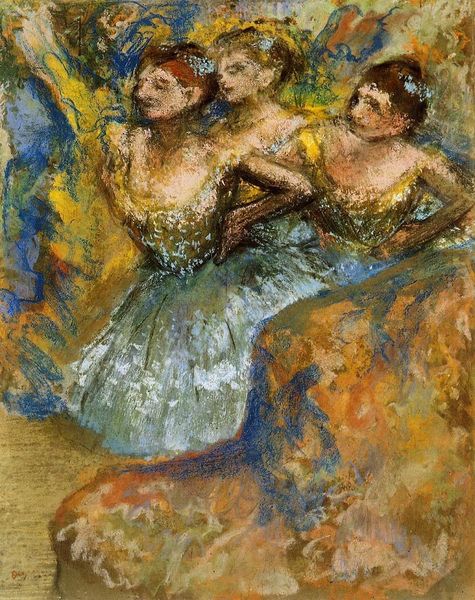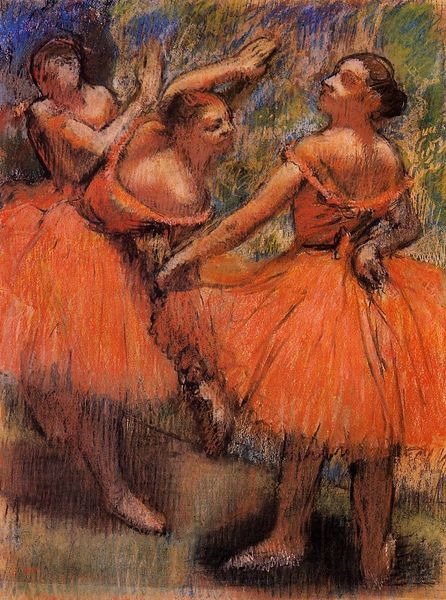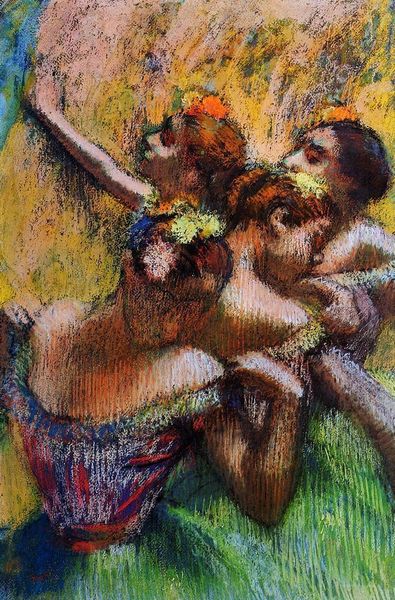
Copyright: Public domain
Edgar Degas captured "Two Dancers with Yellow Corsages" in pastel, revealing an intimate moment between performances. Note the dancers’ entwined hands, a gesture echoing clasped hands found in ancient Roman funerary art, symbolizing bonds that transcend mortality. The arrangement of the bodies, leaning in to support each other, is a motif present in depictions of the Three Graces since antiquity, where beauty and support are inseparable. It reflects something deeper – the silent contracts that bind us, the unspoken dependencies, the shared burdens. Consider how these motifs recur, not as mere repetitions, but as palimpsests where layers of meaning accrete. Each touch and glance becomes charged with the weight of history and the immediacy of human experience. They awaken within us echoes of collective memory and the subtle recognition of shared emotional realities. They reflect the cyclical nature of art, constantly circling back, re-emerging, and transforming.
Comments
No comments
Be the first to comment and join the conversation on the ultimate creative platform.
